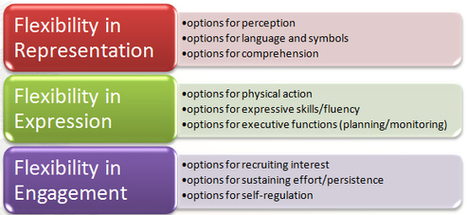UVM has done an excellent job of presenting examples of UDL in practice, specific to the UDL Guidelines. These examples illustrate instructional flexibility to support learning diversity!
"The goal of education in the 21st century is not simply the mastery of knowledge. It is the mastery of learning. Education should help turn novice learners into expert learners-individuals who know how to learn, who want to learn, and who, in their own highly individual ways, are well prepared for a lifetime of learning. Universal Design for Learning (UDL) is an approach that addresses and redresses the primary barrier to making expert learners of all students: inflexible, one-size-fits-all curricula that raise unintentional barriers to learning. Learners with disabilities are most vulnerable to such barriers, but many students without disabilities also find that curricula are poorly designed to meet their learning needs.
Diversity is the norm, not the exception, wherever individuals are gathered, including schools. When curricula are designed to meet the needs of the broad middle at the exclusion of those with different abilities, learning styles, backgrounds, and even preferences, they fail to provide all individuals with fair and equal opportunities to learn. Universal Design for Learning helps meet the challenge of diversity by suggesting flexible instructional materials, techniques, and strategies that empower educators to meet these varied needs. A universally designed curriculum is designed from the outset to meet the needs of the greatest number of users, making costly, time-consuming, and after-the-fact changes to curriculum unnecessary."
 Your new post is loading...
Your new post is loading...
 Your new post is loading...
Your new post is loading...












Elizabeth Stein creates a wonderful analogy of using UDL to create learning environments for all learners. Here is a brief exerpt from her blog on this subject:
"I’d like to offer my version of a teacher’s chisel–a professional tool that can help us to successfully create optimal learning environments. This tool is called the Universal Design for Learning (UDL).
And UDL can be such a powerful chisel. If we stay mindful as we use it, we can not only create one sculpture at a time, like the artist. We also have the power to create a classroom full of masterpieces –simultaneously. It’s simply amazing."